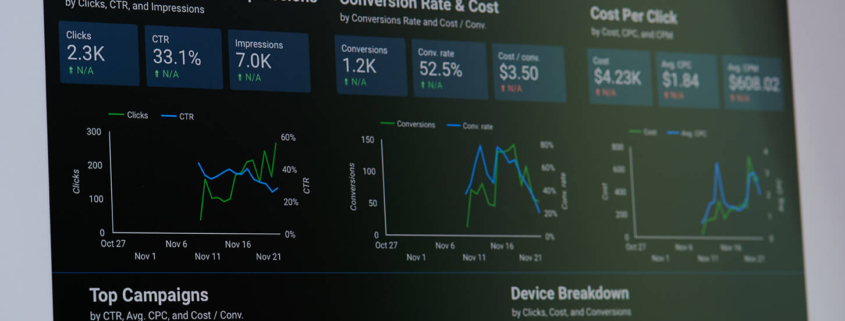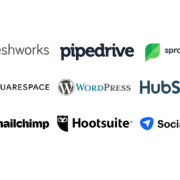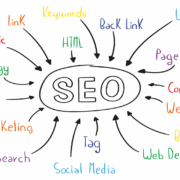What You Should Know Before Beginning Google Ads Management
If your business has any internet presence whatsoever (which it should), you have probably at least heard of Google Ads. If you haven’t, you could be missing out on an incredible opportunity to boost your website traffic and make more sales.
Google Ads (formerly known as Google Adwords and Google Adsense) is a very useful online advertising tool that any digital marketing strategy should include. If you intend to begin a Google Ads campaign, you will need to become familiar with some basic principles of Google Ads management.
Important Metrics to Watch in Your Google Ads Account
Before getting started with campaign management, you will need to know some key metrics that are important for understanding campaign performance. Without understanding these metrics and how they reflect your campaign’s success, you’ll be left completely out of the loop and will not be able to make adjustments to your ad groups if necessary.
Impressions
Impressions are simply the number of times that your ad has been seen by a user. A high number of impressions does not always correlate to a high number of sales, however it is always better to have more impressions than fewer. The higher your number of impressions, the higher your opportunity to make conversions and have a successful google ads campaign.
Conversions
A conversion is somewhat of a unique metric, in that a conversion can refer to any action that you, the campaign manager, deem desirable. A conversion can be a sale, a subscription, phone calls, etc. In turn, conversion rate is the ratio of conversions to impressions, which shows how effective your ads are at turning viewers into customers. Make sure you are using conversion tracking features in Google Analytics to monitor your conversions.
Cost-Per-Click (CPC)
Google Ads operate on a Pay-Per-Click (PPC) model, meaning that you only pay for the number of times your ad has been clicked on. Therefore, pricing is determined by using Cost-Per-Click (CPC). Factors such as quality score and bidding strategy can have an effect on how high or low your CPC is. This is an important metric to follow, as it directly affects your ad spend.
Click-Through-Rate (CTR)
Click-Through-Rate (CTR) measures the ratio of number of clicks to number of impressions. This metric can show how well your ad resonates with the audience.
However, you can have an ad with a high CTR but very few conversions. This could show that while your ad is attractive to the audience, you are failing to reach your target audience. If this is the case, it may not necessarily be an account management issue overall, but rather a targeting problem.
Tips to Help You With Campaign Management
Now that you understand some of the important metrics for running a successful Google Ads campaign, we can help you with some tips that will help you boost ad performance.
Do Thorough Keyword Research
When writing the copy for your ads and landing pages, you will need to choose keywords that align with your audience. Do some keyword research and compile a keyword list that you can use in your copy and rank your display ads for.
Don’t Forget About Negative Keywords
While you need to do keyword research to know which keywords you want your ad to show up for and match your audience, you also need to know which keywords are not aligned with your audience, and need to be avoided.
That is where negative keywords come in. Your negative keywords list in Google Ads is the list of keywords that you want your ads to be excluded from rankings for. For example, if you own a plumbing company, you might want to put “electrician” on your negative keywords list, as it would not be relevant to your business.
Optimize Your Ad Copy & Landing Pages
Now is the time to put your SEO knowledge to the test and optimize your ad copy and landing pages. Optimizing your landing pages is particularly important, as the consumer’s actions after clicking your ad will have a huge impact on your quality score. Make sure that your landing page is relevant to the audience that is being drawn in by your ad, and give them a reason to not leave the page. If you get lots of clicks, but very few conversions, there is most likely an issue with your landing page.
A/B Testing is Key
When it comes to your copy and designs for your ads, A/B testing is going to be instrumental in making sure you put forth your best possible work. A/B testing in this context is when you use two ads that are the same except for one element that will have two varying elements.
Based on which version of the ad performs better, you can know which variation of that particular element is better for your Google Ads campaign. It is important to only test one element of your ad at a time in order to know what effect each element actually has on ad performance. For example, do not try different headlines and descriptions at the same time, because if there is a change in performance, you will not know which is responsible, and how each element is affecting the ad.
Understand Bidding Strategies
Bidding for Google Ads can be done manually, meaning that you set how much you are willing to spend per click in your ad budget. While this gives you the most control, it can also limit you if you do not do thorough research before settling on your bid. You can, however, choose to bid automatically instead. In automatic bidding, Google Ads itself determines how likely your ad is to get clicks and conversions, and will set your bid accordingly.
Both of these bidding methods are viable and have benefits, it all depends on how much control you wish to have, and how much research you are willing to do. The more experience you have with running Google Ads campaigns, the more suited you will be to manually bid.
Need More Help With Google Ads Campaign Management?
Now you know the basics of Google Ads management! Are you ready to start your campaign? Google Ads campaign management can seem like a lot to handle. If you want to get started with Google Ads, but aren’t sure that you are quite ready, that is no problem. That’s what Lift Marketing is here for! If you are looking for Google Ads management services, reach out today!












